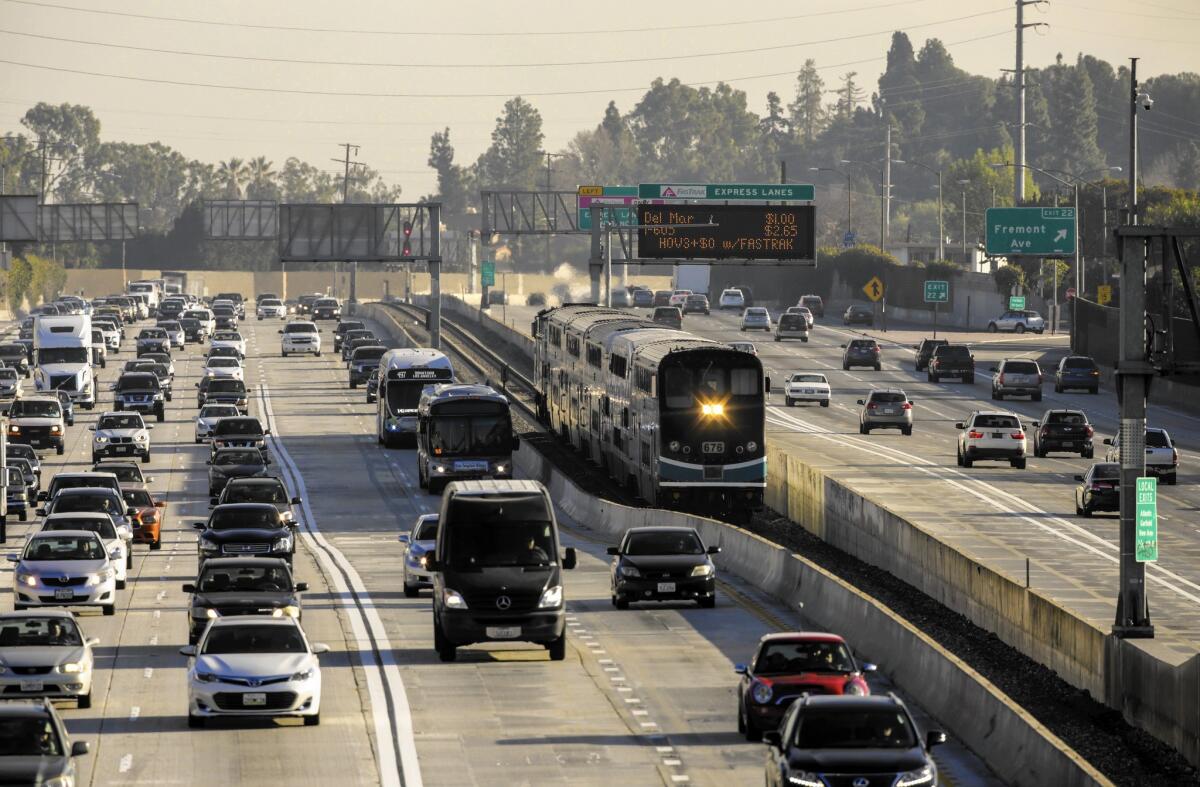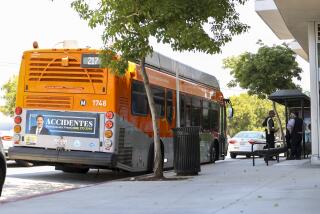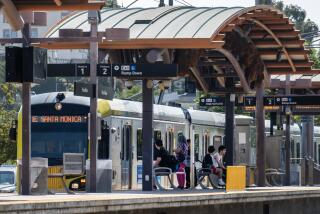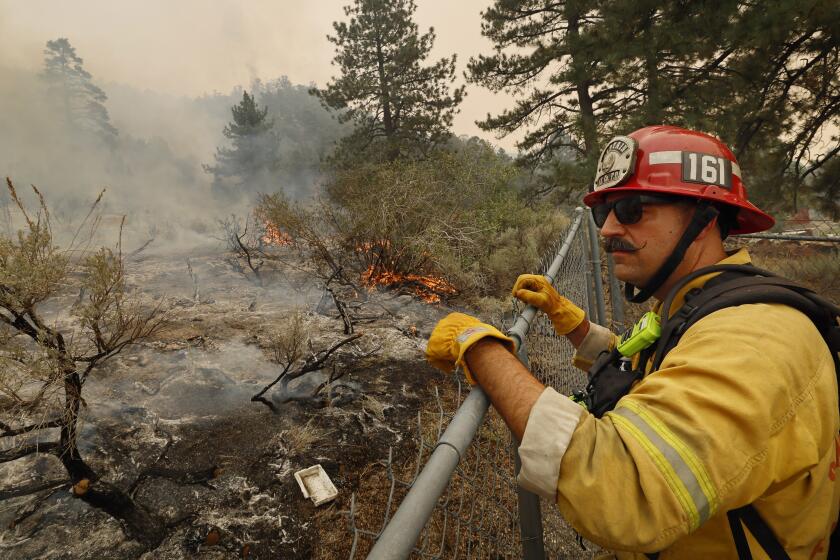Metrolink aims to rebuild ridership with new scheduling on the San Bernardino Line and digital ticketing

Metrolink’s San Bernardino Line snakes its way along the 10 Freeway in Alhambra. The agency is adding two trains to the line during rush hour and eliminating express service.
In an ongoing effort to bolster customer service, the Metrolink commuter railroad has made mobile ticketing apps available throughout its system and plans major schedule changes on Monday to reduce problems for users of the San Bernardino Line.
The digital ticketing and scheduling adjustments to one of Metrolink’s most heavily traveled routes is part of a broad attempt to add amenities for passengers, reduce delays, improve safety and rebuild ridership.
“You need reliable, convenient service. Otherwise people just won’t use us,” said Art Leahy, Metrolink’s chief executive officer who has vowed to help turn around the 512-mile system that serves six Southern California counties.
Metrolink officials say the San Bernardino Line, which runs from Los Angeles Union Station to San Bernardino, will continue to have 38 weekday trains. However, the new schedule will eliminate express service and add two trains during the morning and evening rush hours.
It is expected that the changes will reduce overcrowding on passenger cars, provide riders more options at peak travel times and improve on-time performance.
“I like the new schedule,” said Gerry Salas of West Covina, who commutes on the San Bernardino Line. “The crowding was terrible, and under the old schedule, if I missed the 5 p.m. train, I’d have to wait an hour for the next one. Now there will be more options at night.”
The changes are the result of a comprehensive review of the route’s reliability and travel patterns. A customer survey conducted by Metrolink in mid-February found that more than 60% of riders supported removing the express train and adding service during peak travel times.
Last year, the number of delayed Metrolink trains surged from 2,382 in 2014 to 4,395 — many were on the San Bernardino Line. The delays were caused by a variety of problems, including conflicts with freight trains, breakdowns of locomotives and glitches in the railroad’s new positive train control system, which can automatically stop trains in an emergency.
The situation was made worse for passengers in October when a train was removed from the schedule’s peak hour, leading to overcrowded rail cars. The problems triggered an estimated 2,000 complaints.
“We’re tightening up the schedule and offering better peak hour service. The single express train that has caused some delays will be turned into a non-express train,” Leahy said. “There will be all around better service for everyone out there.”
Metrolink also will make minor schedule changes on the Ventura County Line from East Ventura to L.A. and the 91 Line from downtown Riverside to Union Station via Anaheim.
Starting Monday on the Ventura line, Train 155 will leave Union Station at 3:15 p.m. and arrive in Chatsworth at 4:05 p.m. Train 115 will depart from Union Station at 3:35 p.m. and reach Moorpark at 4:47 p.m.
To avoid conflicts with Amtrak on the 91 Line, Train 707 will operate five minutes later and depart downtown Riverside at 6:07 p.m. and arrive at Union Station at 7:45 p.m.
In another customer relations move, Metrolink expanded the use of mobile ticketing apps last week to all its routes. The app gives riders the option of buying tickets on their smartphones, tablets and laptops.
Mobile ticketing began in early March on the Inland Empire-Orange County Line. Since then, the app has been downloaded more than 7,000 times, and users have bought more than 4,700 tickets, or about 13% of all tickets sold on the route.
The app, which is available for free in the Google Play and Apple App stores, allows riders to connect to participating transit bus systems at no extra cost.
Riders who transfer to Metro Rail, Corporate QuickCard users and Metrolink riders participating in the Rail2Rail program with Amtrak should continue to buy paper tickets from Metrolink’s vending machines.
Railroad officials say they will introduce more improvements in the future to make mobile ticketing available to those customers.
Twitter: @LADeadline16
ALSO
Toddler dies after rollover crash near Hesperia Lake
Plane slams into car parked on shoulder of freeway; car passenger killed
Homophobia, drugs and mental illness may have led to gay man’s killing and father’s arrest
More to Read
Sign up for Essential California
The most important California stories and recommendations in your inbox every morning.
You may occasionally receive promotional content from the Los Angeles Times.











